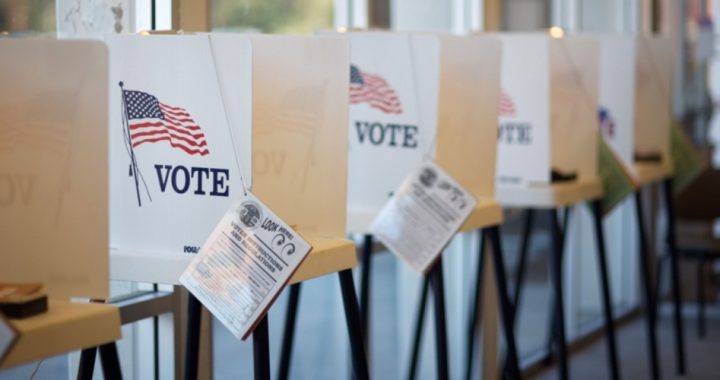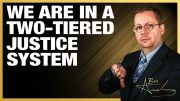
Voters typically experience a certain amount of confusion during an election, but such confusion is usually caused by double-talking politicians smokescreening the issues. It should not be caused by problems inherent in the processes and procedures of the act of voting. The increase in reports of such voter confusion in this election may be caused by an increase in such problems, or perhaps it is caused primarily by an increase in the reporting of such problems, usually by alternative news media. Alternative news media sources appear to be more likely to report on events that are typically brushed aside by the mainstream media outlets.
The Texas Secretary of State’s office issued guidelines on October 27 in response to problems reported by voters where the voting equipment either changed or appeared to have changed their choices. The website offered this advice:
Secretary Pablos issued the following guidance to voters and has instructed county election officials to amplify these tips for voters casting ballots in the 78 Texas counties that have chosen to employ Hart Intercivic eSlate voting machines in their elections:
• When voting a straight-party ballot, wait at least 3-5 seconds for all choices to be rendered on the eSlate voting machines. Counties in which voters have longer ballots may require additional time to allow the screens to load fully.
• Once all the candidate choices for that particular party have been fully loaded, take your time to slowly review each choice in each race before advancing to the next screen.
• When advancing to the next screen, be sure the screen is fully loaded before scrolling through to the subsequent pages.
• Once you have reached the summary page, carefully review each choice listed to ensure the candidate selected is, in fact, the candidate for whom you wish to cast your vote.
• If you find that one or more of your choices are displayed incorrectly on the summary page, hit the ‘PREV’ button and choose the candidate for whom you wish to cast your vote.
• If any issues persist, ask for assistance from a poll worker at your polling location, and the poll worker will ensure that the machine is working properly and advise you on the proper steps to take to cast a ballot with only the candidates of your choosing.
No one voting-machine company should be singled out for criticism, as this particular problem is not the only problem encountered by the complicated technology that has been employed for voting. In many cases, the complications have been discovered during startup early in the morning or during the closing procedures. Another problem is that in most states, the public is not allowed to witness these procedures unless they have been officially appointed as poll watchers, which can be a laborious process. Even then in many states, the poll-watchers are not allowed to use cameras or recording devices of any kind. This is a far cry from traditional American elections in which all aspects of the election, except for the marking of the secret ballot by a voter, were totally open to the public with no advance coordination necessary. Is it any wonder problems with the technology are rarely reported by mainstream news-media sources?
Voter Impersonation or Sloppy Adherence to Procedures?
Voter Melanie Bell Lorant of Tarrant County, Texas, posted a negative voting experience on her Facebook account. According to her post, she showed up to vote during early voting on October 31 and was notified that she already voted. According to Empower Texans, Lorant contacted the Tarrant County elections office and spoke to the early-voting coordinator. She was informed that someone had voted in her name at the Southlake Town Hall on Sunday, October 28, at 11:32 am.
Is it possible that someone deliberately used her name and voted fraudulently? Is it possible that this was a clerical error? If so, why didn’t the fancy technology alert the voting clerk and possibly prevent such an error? The Empower Texans website says: “Lorant says poll workers refused to document the problem or find a solution.” The election workers were supposed to document that she was turned away. The public knows of this incident because Lorant posted it on Facebook and has doggedly pursued it further. How many other voters had similar experiences, but the public doesn’t know about it because they didn’t follow-up like Melanie Bell Lorant did.
Texas has a voter ID law that should have prevented this from happening, but there are some people who doubt whether or not all voting officials are adhering to that law. Texas law makes it difficult for poll watchers to be appointed at polling locations or at the central counting stations to witness the processing of the computer data as it is read into the central counting computers. When the poll watchers navigate the obstacle course of the poll-watcher appointment process, they are required to sign under oath:
I, ______, a poll watcher for the above appointing authority, do hereby swear or affirm that I do not have in my possession any type of mechanical or electronic means of recording images or sound while serving as a watcher at this precinct or I will disable or deactivate the device while serving as a watcher.
Once again, this is a far cry from the openness of traditional American elections. Hopefully, Tarrant County maintains a paper trail of voter signatures. The New American has posted a reply on Melanie Bell Lorant’s Facebook page and will continue to look further into this.
Long Lines While Waiting to Vote
Are the long lines and long waits really inevitable at polling locations? Are long waits for voting being used to convince voters they need to accept early voting? If you’re standing in line waiting to vote, look around. Is there only one line or are there multiple lines? The October 22, 2018 issue of The New American (page 17) explains how efficiently voter check-in is accomplished in New Hampshire. New Hampshire Secretary of State William Gardner explained to The New American how they processed 12,794 in-person voters on election day in 2016 in Londonderry, New Hampshire, without long lines and long waits. They have as many as 15 tables arranged alphabetically for voter check-in.
Do you need to wait in line for a computerized voting booth to come available? In New Hampshire they use optical scan voting equipment where the voter marks a paper ballot that is fed into the machine. The final step takes only a few seconds per ballot as opposed to having a voter tying up a voting machine for the entire time he makes his selections. And there is a voter-verified paper trail of the ballot.
Look around at the polling place and ask yourself if the long lines are inevitable and need to be fixed by implementing early voting, or if they are caused by inefficiencies that can be fixed by implementing more efficient procedures.
Paper Ballots and Open Elections
In the October 1976 Bulletin of The John Birch Society, JBS Founder Robert Welch wrote:
But we are talking about something now which is much less melodramatic, yet may be far more fatally conclusive in the long run. That is the provable occurrences of vote frauds in some elections below the level of a Presidential contest, and their probable occurrence in many more. This is especially true of situations where voting by machine, or vote-counting by machinery, are involved. For “fixing” any one machine to produce dishonest results, with exactly the decisive difference desired, is tremendously easier and safer than “fixing” a score or a hundred human beings for the same purpose. And to doubt the willingness or the ability of the Insiders or their Communist agents to use this means of gaining any single step in the total battle is to ignore the whole past history of their cunning and their amorality. So we are hereby urging all conservative candidates for any important offices — state or federal — to give careful consideration to the problem of obtaining honest treatment in the electoral process. And we are further making a more general, but equally intense recommendation, to the American public at large, to take all necessary steps for getting rid of all voting or vote-counting machines as rapidly as they possibly can. Those apparatuses constitute a very serious and calculated danger to the future of the American Republic. Also, even if and when those machines are abolished, we ask the American public to remember, since the pro-Communist vote has become an important factor in our whole political process, that the Communists are not on record as ever having held, anywhere, a single honest election which they were in position to control.
The wisdom of Robert Welch is as applicable today as it was in 1976.



